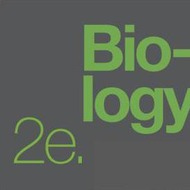
(View Complete Item Description)
This resource includes three classroom-tested activities that were created using the ideas outlined in the article “Getting more out of animations” by Pruneski and Donovan (in press). The driving idea is that animations can be a powerful tool for learning complex biological processes, but when students are passive viewers, it limits their usefulness and may become simply another source of content to be memorized. Engaging students with animations can greatly increase the amount of information that can be extracted and can help students develop important learning skills that can be useful in the future.
These sample assignments help make the use of animations more effective and active by structuring student viewing using guiding questions. These questions focus on particular objects, features, or steps of the process to help students accomplish specific learning objectives for that topic. The assignments also help students think about animations as media objects that are created by scientists and animators using specific tools and conventions that affect how the process is depicted and the ways in which it should be viewed. Lastly, by comparing and contrasting multiple animations of the same process, students can extract more information, overcome the limitations of each individual animations, and generate a more complete view of the process.
Material Type:
Activity/Lab,
Homework/Assignment
Authors:
Stacey Kiser,
Sam Donovan,
Justin Pruneski




















